John Daley and his new wife settled in a weatherboard house in Albion Road, producing 3
children
between 1886 and
1891.
He was a successful and busy builder, locally building a number of properties, both
residential
and
business. He
also
became involved in local affairs, becoming a member of the MUIOOF, joining the cricket
club,
and
being elected to
the
Box Hill Council.
But in the early 1890s a depression occurred, and many people were thrown out of work.
It
seems
that
in an effort to
help both provide work and stimulate the economy, George Sims’s widow, Catherine,
commissioned
Daley
to build Banff,
named after her late husband’s Scottish birthplace, and left it to her daughter Jessie
after
her
death. John had
already
completed another home for the family, across the road, called Turriff.
Banff was completed by 1892, according to the ratebooks. The depression deepened,
however,
and
the Daley family
couldn’t
afford to live in the house. They needed to either sell or rent it out. John Daley
went
briefly
to South Africa
looking
for work, but he returned in less than a year and took the family to Bendigo. Here
he
re-established himself as a
builder, some of his buildings remain extant today, and Jessie produced another 4
children.
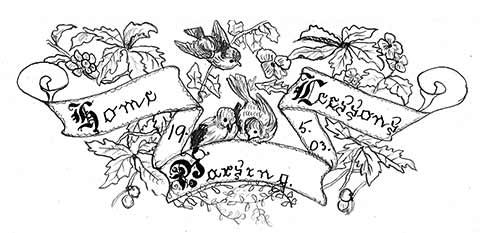 The house was let to the five Taylor sisters. Fanny, Louisa, Winifred Rose, Grace
and
Constance
were the daughters
of
Frederick Augustus Taylor and his wife Caroline (nee Piggott) from Buckinghamshire
in
England,
who had arrived in
Victoria by 1862. In 1891 the sisters purchased the goodwill of Mrs. Newton's
short-lived
Girls
High School in
Ashted
Road. Initially conducting the school in William Street, in 1892 they leased Banff,
then
named
their school
Banff Ladies' College. At the time these private schools were
established,
teaching qualifications
were
not required – that only happened in 1905 with the Teachers and Schools Registration
Act.
Banff
Ladies' College was
registered as School No. 745, qualifying at sub-primary and primary levels.
The house was let to the five Taylor sisters. Fanny, Louisa, Winifred Rose, Grace
and
Constance
were the daughters
of
Frederick Augustus Taylor and his wife Caroline (nee Piggott) from Buckinghamshire
in
England,
who had arrived in
Victoria by 1862. In 1891 the sisters purchased the goodwill of Mrs. Newton's
short-lived
Girls
High School in
Ashted
Road. Initially conducting the school in William Street, in 1892 they leased Banff,
then
named
their school
Banff Ladies' College. At the time these private schools were
established,
teaching qualifications
were
not required – that only happened in 1905 with the Teachers and Schools Registration
Act.
Banff
Ladies' College was
registered as School No. 745, qualifying at sub-primary and primary levels.
The room to the right was the school’s dining room, that on the left the classroom.
Rose
and
Fanny Taylor ran the
household, while Louisa, Grace and Constance managed the school. The Box Hill
Historical
Society
has one
photo of
pupils, taken by neighbour Frederick
Bull.
You
will see a few boys; the
school took in boys
under
the age of 10 years. The historical society also has two student work books and some
reminiscences by former pupils.
As well as conducting the school themselves, the Taylor sisters had visiting
teachers,
some
of
whom are known. The
artist Clara Southern taught drawing here from 1895 until at least 1900, while the
German
language teacher, Miss
Mathilde Monash, had been Dux of PLC, and was an accomplished linguist. She was also
the
sister
of John Monash.
Other
teachers included Madame Elise Last, who taught French, Miss Fannie Charlesworth,
who
taught
singing, and Miss
Godwin
Smith who taught elocution.
Grace Taylor first took ill in 1902 and died of TB in an upstairs bedroom in 1904;
she
was
only
36. The remaining
sisters continued running the school until 1908 when they left to take on new
premises
in
Rutland Road, before
finally
closing the school in 1914. The tragic tale of what befell the sisters is revealed
in
one of
the
cemetery tours run
by
the Society or can be read in the Society’s archives.
After the Taylor sisters left, the house remained empty for at least a year. John
Daley
had
prospered in Bendigo,
and
now returned to Melbourne, but not Box Hill. Rather, he purchased a large tract of
land
in
Elwood, subdivided it and
began building villas on his Ormond Estate. They took some time to sell, and money
must
have
been tight again, so in
1910 Banff was advertised for sale at a bargain price of £1,150.
There were no takers, so the house was rented out again, and in 1911 a new tenant
arrived,
probably the most exotic
-
Solomon Jaboor. Born in Lebanon, and educated in the American Missionary
Presbyterian
School
there, he arrived in
Melbourne in 1891, and soon established a successful import and manufacturing
business
in
Lonsdale Street. He began
helping fellow Syrians, and in 1910 became President of the Ottoman Society in
Victoria.
He
was
already living in
Box
Hill before he moved in here, because his youngest son, Roy, born in 1909, was born
in
Springfield Road. Roy and his
6
siblings lived in the house with their parents until late in 1912. Roy went on to
achieve
military fame. He enlisted
in
the AIF in 1927, rose steadily through the ranks in the 2nd World War, received an
OBE
in
1946
and retired as a
Lieut.
Colonel.
After the Jaboors left, the house remained mostly vacant again, until in 1915 it was
purchased
by Henry Tymms, who,
after starting his career as a messenger boy, had recently retired as Chief
Inspector of
the
Postal Department.
According to the ratebooks there were 11 people residing here, in 10 rooms. Just who
they
were
is unclear. Of
Henry’s 8
children with wife Agnes, born between 1869 and 1883, 2 girls had died in childhood,
and
a
son
died in 1902. Four of
the
5 remaining sons were married and had apparently left home, the youngest son being
then
34
years
old, so the reason
for
buying the property and who was living here is a bit unclear.
In December 1916, the local paper reported that Henry and his wife were celebrating
their
golden
wedding
anniversary.
Two months afterwards, Agnes Tymms died while holidaying at Terang. The next month,
Henry
advertised for some female
domestic help, and later that year married Alice Speed. Whether she was the domestic
help is
unclear; there was a 31
year age difference between them.
Henry, by now blind, celebrated his 80th birthday here in 1925 and died 3 years
later.
His
Will
left his entire
estate
to Alice. The five surviving sons had been disinherited. Alice lived on for another
31
years,
dying in Geelong in
1959.
She left the property to St Peter’s C/E Box Hill. The house was put up for sale and
bought
by
the Italian Smarelli
family, in January 1960 for £5,250. They remained here until 2015, when it was put
up
for
sale.
It sold for $3
million.
A permit for 9 units to be developed on the site, with an underground carpark at the
rear of
the
building, was
rejected
by Whitehorse Council, but approved by VCAT. This increased the value of the land
enormously,
and the house was
on-sold
for nearly $4.6 million, and then again onsold in 2018, this time for over $6.65
million. In
2022 the site was
offered
for sale again, but no sale ensued. In the meantime, the site has been moonscapped,
and
agents
have been offering
the
units for off-the-plan sales.


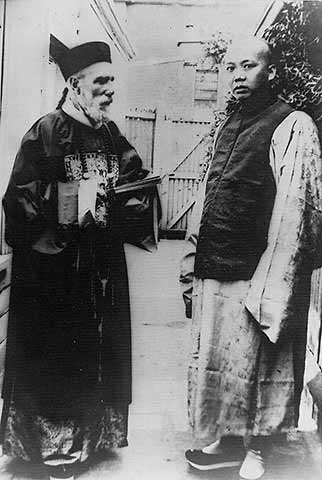
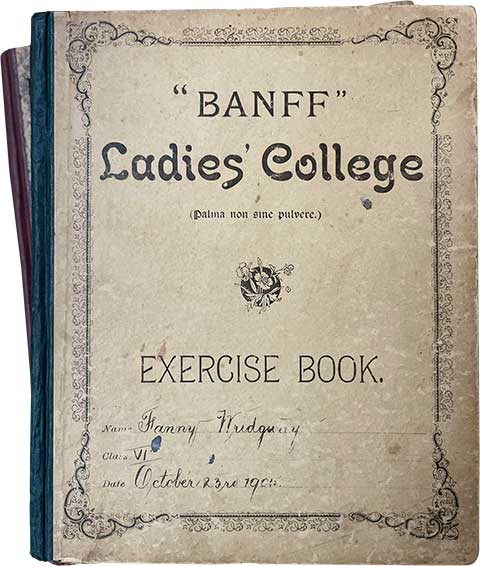 This impressive house has a Whitehorse Council heritage overlay, one of 3 houses in the
street
that
have overlays,
and
was built by John Robert Daley. Born in Bendigo in 1862, he was the younger son of
Charles
Daley, a
builder and
contractor, and obviously learnt his trade from his father. How they met is unknown, but
in
1885
he
married Jessie
Elizabeth Sim, daughter of George and Catherine, who have been mentioned already.
This impressive house has a Whitehorse Council heritage overlay, one of 3 houses in the
street
that
have overlays,
and
was built by John Robert Daley. Born in Bendigo in 1862, he was the younger son of
Charles
Daley, a
builder and
contractor, and obviously learnt his trade from his father. How they met is unknown, but
in
1885
he
married Jessie
Elizabeth Sim, daughter of George and Catherine, who have been mentioned already.
 The house was let to the five Taylor sisters. Fanny, Louisa, Winifred Rose, Grace
and
Constance
were the daughters
of
Frederick Augustus Taylor and his wife Caroline (nee Piggott) from Buckinghamshire
in
England,
who had arrived in
Victoria by 1862. In 1891 the sisters purchased the goodwill of Mrs. Newton's
short-lived
Girls
High School in
Ashted
Road. Initially conducting the school in William Street, in 1892 they leased Banff,
then
named
their school
The house was let to the five Taylor sisters. Fanny, Louisa, Winifred Rose, Grace
and
Constance
were the daughters
of
Frederick Augustus Taylor and his wife Caroline (nee Piggott) from Buckinghamshire
in
England,
who had arrived in
Victoria by 1862. In 1891 the sisters purchased the goodwill of Mrs. Newton's
short-lived
Girls
High School in
Ashted
Road. Initially conducting the school in William Street, in 1892 they leased Banff,
then
named
their school 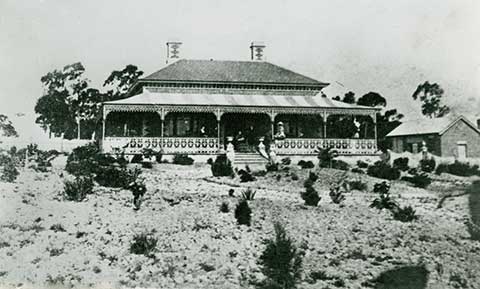
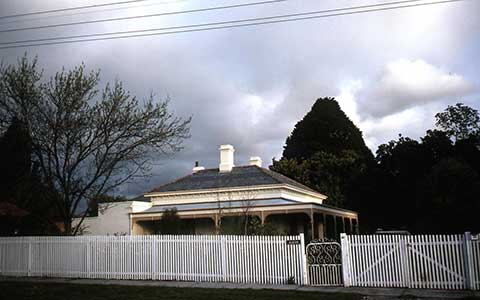
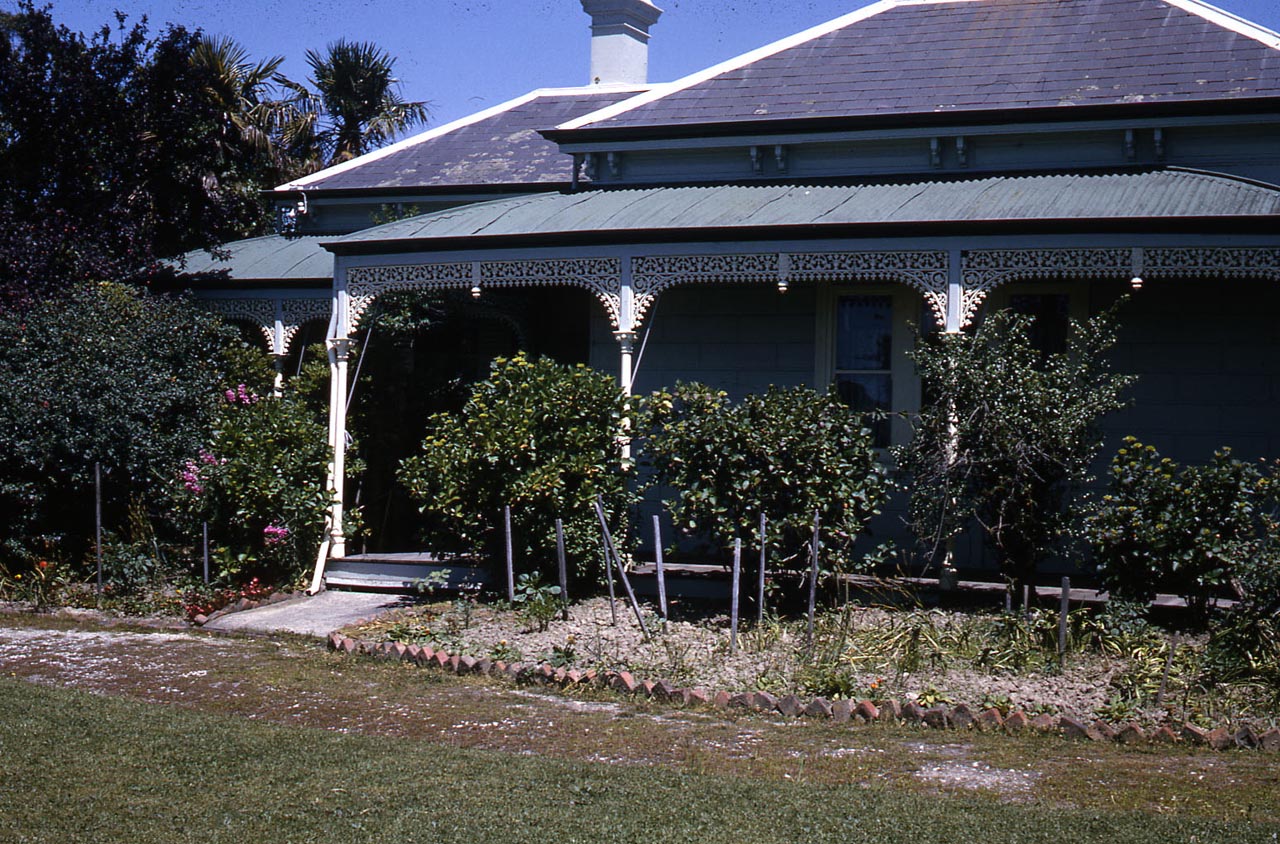
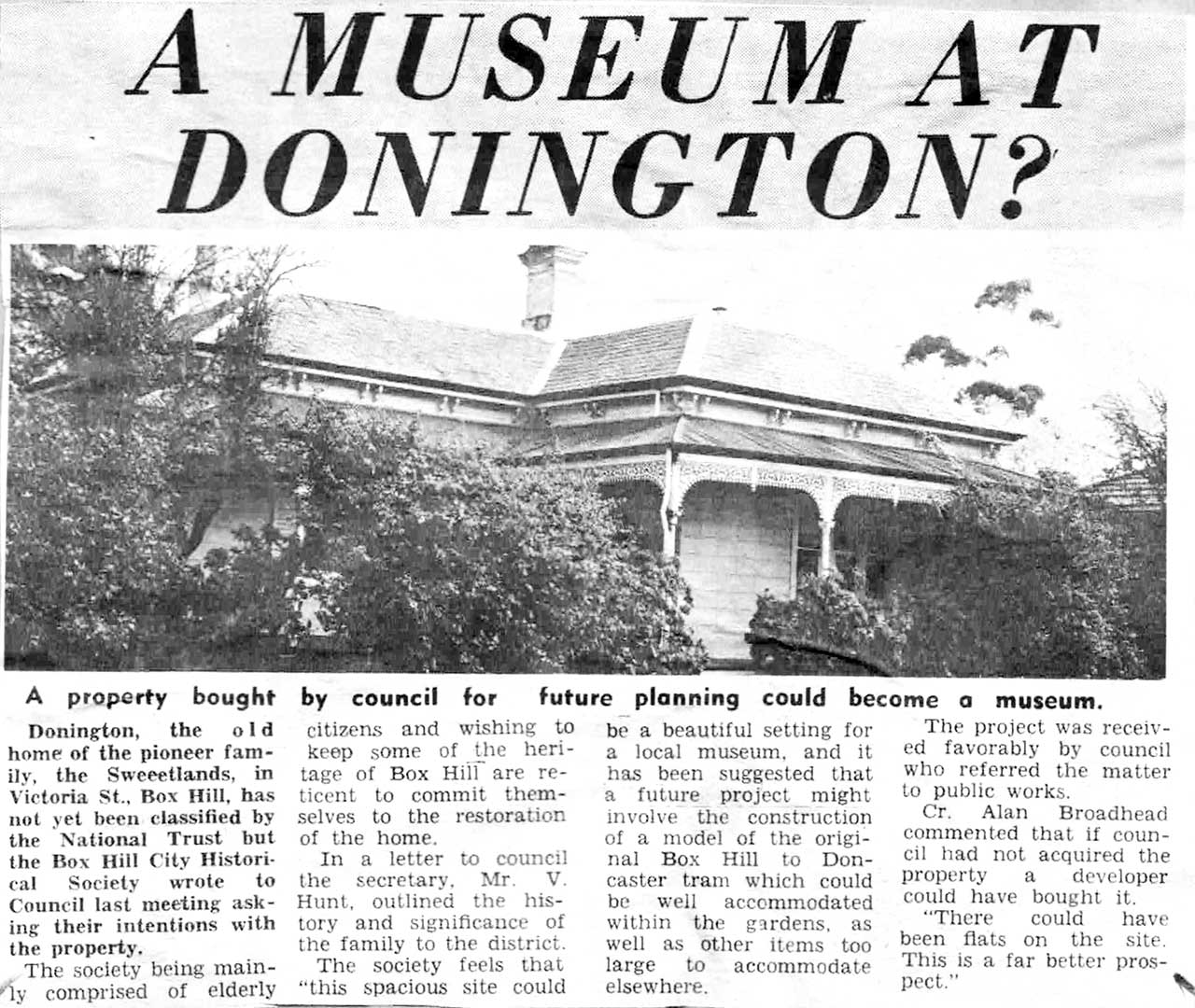
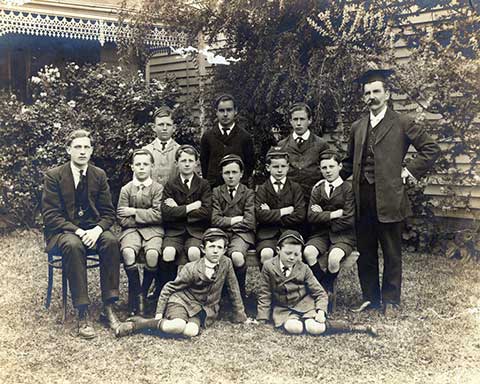
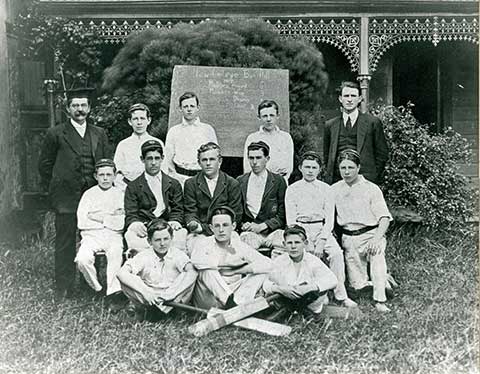
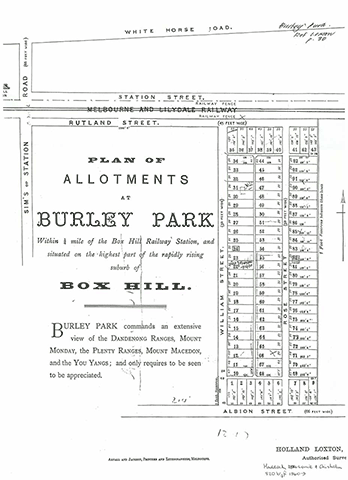
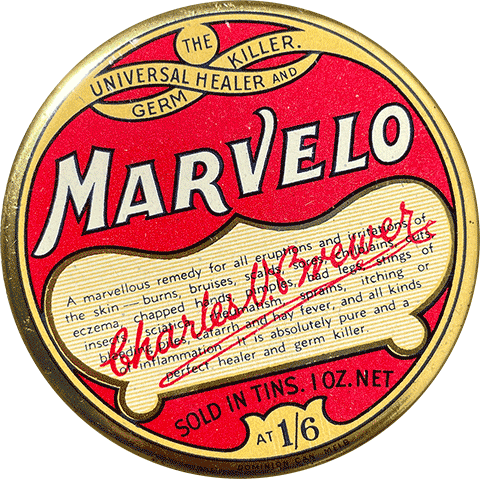 This house, built in 1918, was the site of two cottage industries operated by the Brewer
family. The
first was for
the
manufacture of tins of Marvelo Ointment,
which was
promoted and delivered by the father
Charles.
This house, built in 1918, was the site of two cottage industries operated by the Brewer
family. The
first was for
the
manufacture of tins of Marvelo Ointment,
which was
promoted and delivered by the father
Charles.
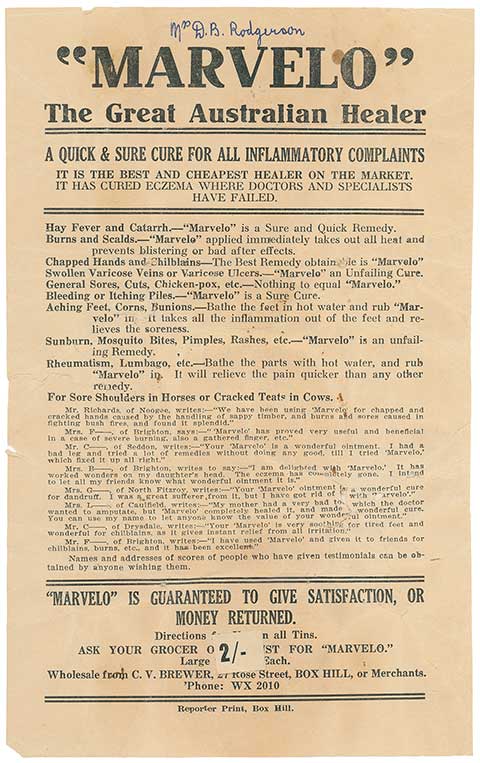
 As mentioned earlier, George Sim sold the 15 acres on which his home Mona Vale was
situated,
to Box
Hill’s first
blacksmith Robert Sutton, in 1882. Sutton enlarged the house and changed its name to
Ashted
House, a
name that was
then
used in the street that was formed when the land was subdivided the following year. A
photo of the old
house appears below.
One of the early occupants of this street was Mary Elizabeth Newton, a widow. She was
the
youngest
daughter of Rev
William Hutchinson of Mansfield, and in 1885 married Alfred John Newton, a native of
Cooma
NSW. Their
only son,
Harold
Edward Shields Newton, was born there the following year. The family returned to
Melbourne
shortly
afterwards.
Alfred
died in the Melbourne Hospital in October 1887, aged 42, so Mary had become a bride, a
mother and a
widow within 3
years. She needed to earn an income to support herself and their child, so early in 1889
rented a home
in William
Street, and a property in this street that she used as a boarding and day High School
for
girls. One of
the book prizes
that she gave to a student is in the Society’s possession.
As mentioned earlier, George Sim sold the 15 acres on which his home Mona Vale was
situated,
to Box
Hill’s first
blacksmith Robert Sutton, in 1882. Sutton enlarged the house and changed its name to
Ashted
House, a
name that was
then
used in the street that was formed when the land was subdivided the following year. A
photo of the old
house appears below.
One of the early occupants of this street was Mary Elizabeth Newton, a widow. She was
the
youngest
daughter of Rev
William Hutchinson of Mansfield, and in 1885 married Alfred John Newton, a native of
Cooma
NSW. Their
only son,
Harold
Edward Shields Newton, was born there the following year. The family returned to
Melbourne
shortly
afterwards.
Alfred
died in the Melbourne Hospital in October 1887, aged 42, so Mary had become a bride, a
mother and a
widow within 3
years. She needed to earn an income to support herself and their child, so early in 1889
rented a home
in William
Street, and a property in this street that she used as a boarding and day High School
for
girls. One of
the book prizes
that she gave to a student is in the Society’s possession.